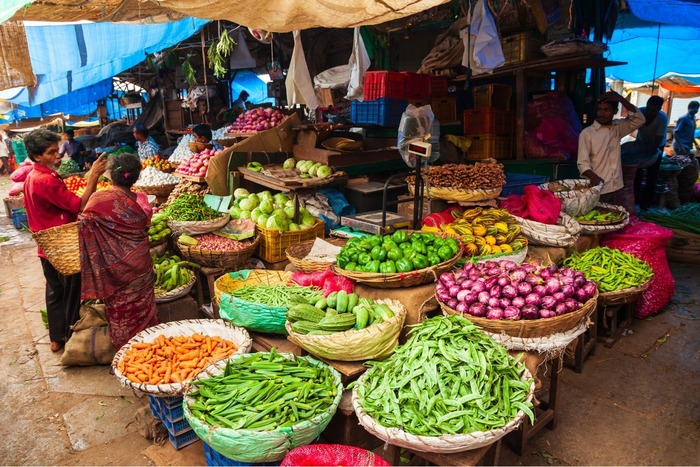Kitchen staples like tomatoes, onions, potatoes are highly susceptible to weather shocks and are major drivers of food inflation.
New research found that extreme weather events in India are disrupting food systems, and are driving the spike in food prices. The research titled “Climate Shocks and Kitchen Staples: How Extreme Weather Events Drive Food and Vegetable Inflation in India” by Climate Trends mentioned that this price instability can be seen in Indian vegetable markets.
The research cited that on an average, rainfall changes raises vegetable inflation by about 1.24 percentage points, and temperature changes increase it by 1.30 points. Extreme weather has disrupted supply, damaged crops in the field and storage, and has worsened post-harvest losses and has caused sharp price hikes in short duration and perishable crops like Tomatoes, Onions, and Potatoes (TOP). These crops are highly sensitive to extreme weather shocks.
Climate Impact is leading to Price Inflation
The report found that tomato prices have hiked 10.9% and the production has declined by 12.9% owing to heavy rains in Himachal Pradesh and Karnataka. Unseasonal rainfall hailstorms in Maharashtra led to a 28.5% production drop and prices rose to ₹39/kg in November 2023. In fiscal 24, unseasonal rainfall in West Bengal and frost in Uttar Pradesh reduced production by 7%, keeping prices elevated throughout 2024.
According to the research, food inflation eased after 2014 due to improved supply. However, it spiked in 2019 due to unseasonal and excessive rains. Kharif onion crops were damaged in Madhya Pradesh, Maharashtra, and Karnataka in October and November 2019, while rainfall and cyclones caused potato crop loss in Uttar Pradesh and West Bengal in March and May 2020. This trend continued in 2020-21 due to pandemic disruptions. Inflation briefly moderated in 2021-22, but rose again in 2022-23 due to post-pandemic demand and the Russia-Ukraine war. As conditions began to stabilise, erratic weather in 2023-24 triggered new supply shocks, particularly in vegetables, which kept inflation high, the report found.
Way forward
This food inflation has impacted small and marginal farmers the most, who dominate the vegetable supply. They are facing disproportionate losses due to lack of safeguards, storage, and transport infrastructure.
Researchers emphasised the need to promote climate-resilient crop varieties and protected cultivation methods, such as greenhouse management technology for tomatoes, chillies, and capsicum, to shield them from extreme conditions.
Dr Ashutosh Singh, Professor from GB Pant University of Agriculture and Technology said, “Cluster farming can build collective resilience. For easily perishable crops like tomatoes, transporting and selling the produce immediately after harvest can reduce the post harvest losses from weather conditions. To prevent spoilage from increasing heat, farmers in the same area can pool their produce together and transport them in a refrigerated van to the nearest mandis. This is an economical option for small farmers to safeguard their produce from heat induced losses.”
About The Author
You may also like
Air Pollution is Changing the Lightning Patterns in India, Study Finds
Temporary CO2 Removal Will Help Offset Methane Emissions: Report
Rise in Fossil Fuel Burning is Making Floods Lethal in Asia
Heatwaves Drove 9% of India’s Power Demand in the Summer of 2024
World Off-Track on Climate Goals as Temperatures are Predicted to Rise: Report

